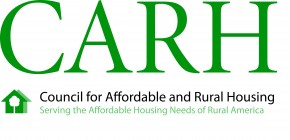- November 2022
- October 2022
- September 2022
- August 2022
- July 2022
- June 2022
- May 2022
- April 2022
- March 2022
- February 2022
- January 2022
- December 2021
- November 2021
- October 2021
- September 2021
- August 2021
- July 2021
- June 2021
- May 2021
- April 2021
- March 2021
- February 2021
- January 2021
- December 2020
- November 2020
- October 2020
- September 2020
- August 2020
- July 2020
- June 2020
- May 2020
- April 2020
- March 2020
- February 2020
- January 2020
- December 2019
- November 2019
- October 2019
- September 2019
- August 2019
- July 2019
- June 2019
- May 2019
- April 2019
- March 2019
- February 2019
- January 2019
- December 2018
- November 2018
- October 2018
- September 2018
- August 2018
- July 2018
- June 2018
- May 2018
- April 2018
- March 2018
- February 2018
- January 2018
- December 2017
- November 2017
- October 2017
- September 2017
- August 2017
- July 2017
- June 2017
- May 2017
- April 2017
- March 2017
- February 2017
- January 2017
- December 2016
- November 2016
- October 2016
- September 2016
- August 2016
- July 2016
- June 2016
- May 2016
- April 2016
- March 2016
- February 2016
- January 2016
- December 2015
- November 2015
- October 2015
- September 2015
- August 2015
- July 2015
- June 2015
- May 2015
- April 2015
- March 2015
- February 2015
- January 2015
- December 2014
- November 2014
- October 2014
- September 2014
- August 2014
- July 2014
- June 2014
- May 2014
- April 2014
- March 2014
- February 2014
- January 2014
Updated Maturing Mortgages Data Released
CARH’S BROADCAST E-MAIL
April 10, 2017
On April 7, Rural Development (RD) announced that they updated their Section 515 and Section 514/516 maturing mortgage data, through the quarter ending December 31, 2016, onto their Multi-Family Property Preservation Tool. You can also access the MFH Property Preservation Tool from RD’s website under the Forms & Resources tab. The dashboard has been updated to provide additional information indicating changes in maturity dates since the initial maturing mortgage data was provided for the quarter ending March 31, 2016.
CARH’s Maturing Mortgages Database will soon be updated with the newly released data. That database can be found by clicking here, or visiting the Members’ Only section of the CARH website, www.carh.org.
There are nearly 14,200 apartment communities throughout the country that have been financed through RD’s Section 515 and 514/516 programs. As CARH members know, the Section 521 Rental Assistance (RA) program has been used in conjunction with these programs. There are some 271,000 units which have rent subsidy through the RA program. Like HUD’s Project-Based Section 8 program, the Section 521 RA program allows the program to assist the poorest of the poor, limits tenant rent to 30% of income but, unlike Section 8, targets rural areas of the country. Without these properties and the associated rental subsidies, nearly half a million households in rural Americans would be left without suitable affordable housing.
The earliest of these loans made in the 1970’s are beginning to mature, meaning the loans are reaching their payoff dates. Under current law, once an RD mortgage is paid off, the affordability restrictions and any associated RA goes away and owners are permitted to increase rents and treat the property like any market rate rental community.
Loan maturities began in 2014, with 15 properties containing 428 rental units reaching maturity. The maturities surge by the year 2022 when nearly 10,000 units of affordable housing would mature out of the program, eliminating some of the only affordable housing that is available in many rural communities. RD last year had initially told stakeholders that the maturing mortgage cliff would happen much sooner. However, the agency has recalibrated that information based on work by an outside contractor that is reflective in the Multi-Family Property Preservation Tool.
In addition to CARH closely monitoring this very important issue, GAO has been asked by Congress to examine this issue. GAO has spoken to many CARH members and stakeholders in order to garner as much information on the maturing issue as well as the RA program. It is expected that a report will be issued by GAO later this year. This report will no doubt set the stage for Congressional action on the maturing mortgage issue. When the GAO analysis is complete, CARH will look at recommendations and respond accordingly. Please look for updates on this important issue either through CARH broadcast emails or in articles in CARH News.
If you have any questions, please contact us at carh@carh.org or 703-837-9001.





